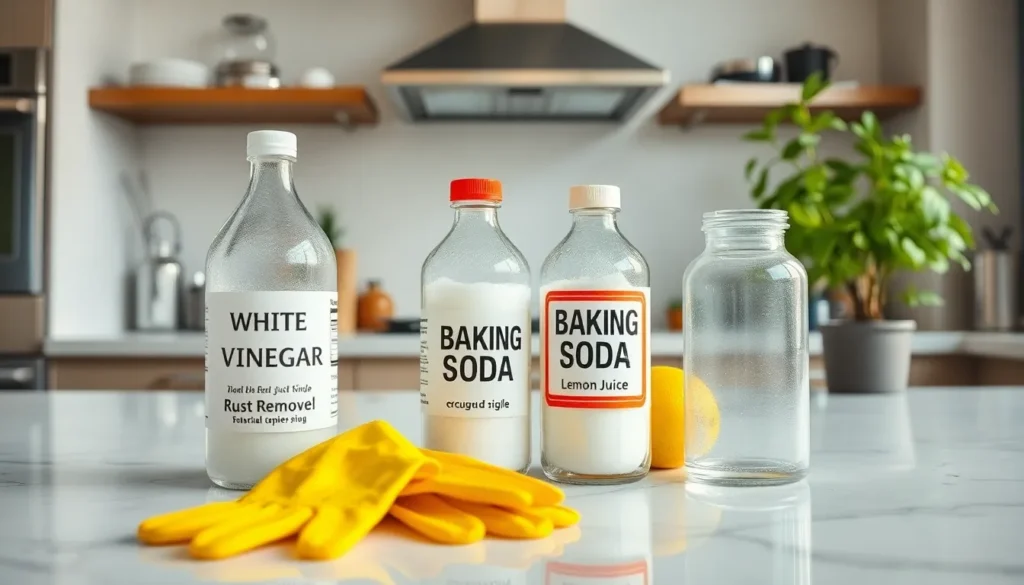Table of Contents
ToggleEver heard the term “rust bucket car” and wondered if it was just a funny way to describe your neighbor’s old ride? Well, it’s more than just a chuckle-worthy label. A rust bucket doesn’t just signify a product of poor maintenance: it can save you from hefty repair bills and unforeseen headaches. Here’s a deep jump into the world of rust bucket cars, their signs, causes, and ways to manage them without pulling your hair out.
Understanding Rust Bucket Cars

To put it simply, a rust bucket car is a vehicle that has seen better days, lots of them. When those shiny metals give way to flakes of rust and corrosion, it’s not just an aesthetic issue: it’s a major red flag. These cars usually have extensive rust damage, often to critical components like the frame, suspension, or even the engine itself.
Rust bucket cars often come from harsh climates or can be the unfortunate result of neglect. Living in areas with heavy snowfall can mean road salt is your car’s worst enemy. Think of rust as that sneaky thief slowly creeping into your vehicle’s health, and before long, your trusty steed turns into a metaphorical jalopy waiting for retirement.
Understanding rust bucket cars isn’t just for mechanics: it’s for anyone who values safety, efficiency, and monetary prudence.
Common Signs of a Rust Bucket
Spotting a rust bucket isn’t rocket science, but it does take a keen eye. Here are a few signs to watch for that can turn any car enthusiast into a cautious investor:
1. Visible Rust Patches
The most obvious sign. If you see orange or brown spots creeping up the side of a vehicle, it is time to investigate further. The presence of rust on the surface is often a telltale sign of deeper issues lurking beneath.
2. Flaking Paint
When paint starts peeling away, it’s like that friend who flakes on dinner plans. This indicates the metal underneath is deteriorating. Flaking paint is typically not just a cosmetic issue: it’s a cry for help from your vehicle.
3. Weak or Crumbling Frame
A compromised frame is like a house built on sand. Grab a flashlight and peek underneath. If the frame feels weak or has holes, you may be looking at a true rust bucket.
4. Unusual Noises from Suspension
If driving feels like riding a roller coaster without the thrill, your suspension might be compromised due to rust. Listen for odd creaks and groans that could indicate rust damage.
Recognizing these signs can save you misery (and money) in the long run.
The Causes of Rust in Vehicles
Rust doesn’t just appear out of thin air: it’s more like a slow dance that begins with moisture and metal, and before you know it, you’ve got a full-blown corrosion catastrophe.
1. Exposure to Moisture
Rain, snow, and even high humidity can cause metal to rust. If your vehicle is always wet and lacks proper drainage, it’s a recipe for disaster.
2. Salt Exposure
If you live in a snowy area, road salt is often the primary culprit. Salt can accelerate rust formation by attracting moisture, making your car a prime candidate for rust bucket status.
3. Insufficient Maintenance
Abandoning regular washes, waxes, and inspections? Your vehicle will surely pay the price. Neglecting maintenance invites rust to set up camp.
4. Damage to Protective Coatings
Dents, scratches, and chipping paint expose the bare metal beneath, inviting rust in. Protecting your car’s paint is vital in extending its life.
Knowing the causes can empower you with the knowledge to take preventive steps.
Impacts of Driving a Rust Bucket Car
Driving a rust bucket isn’t just an exercise in aesthetic discomfort: it can have serious consequences that extend beyond mere embarrassment.
1. Safety Hazards
Rust can compromise structural integrity, making your vehicle unsafe if a collision. We all want to feel secure behind the wheel, right?
2. Expensive Repairs
Ignoring a rust issue can turn a small fix into a monstrous bill. Once rust takes hold, it often spreads, resulting in repairs that’ll make you reconsider your choices, often at the worst possible moment.
3. Decreased Resale Value
If you ever plan to sell or trade your vehicle, a history of rust can significantly decrease its market value. Nobody wants to be stuck with a car that’s practically crying for help.
4. Environmental Impact
Old rust buckets can leak fluids, potentially harming the environment. A little rust might seem benign, but long-term neglect could lead to negative ecological impacts.
Managing or Restoring a Rust Bucket
So you’ve found your car has taken on the unfortunate title of rust bucket. Don’t panic. There are strategies to either manage the situation or even restore it to its former glory.
1. Regular Inspections
Conducting regular inspections is vital. Getting familiar with your vehicle’s health helps catch any rust before it becomes a mountainous mess.
2. Rust Removal Products
There are a variety of products designed to combat rust. Look for rust converters, encapsulators, and protectants. These can help stop rust in its tracks without very costly.
3. Professional Help
Sometimes it’s best to call in the cavalry. A professional can provide a thorough evaluation and recommend the best course of action, especially for severe cases.
4. Protective Coatings
Once you’ve repaired the rust, don’t forget to protect your investment. A good coat of wax or a rust inhibitor can act as a shield against future exposure to moisture and elements.
Taking proactive steps can change the rust bucket narrative entirely.










